An Analysis of Lebanon’s Real Estate Market
- “Has the real estate market in Lebanon peaked?”
- “is it the right time to buy real estate?”
- “Have we hit rock bottom?”
- “why should I consider buying real estate in Lebanon today”
Legitimate questions that I shall address through the analysis of the Lebanese market indicators, and therefore answer the big question: Why buy real estate in Lebanon today?
Let me begin by explaining the real estate market cycle phases, reflect it on the local market and ultimately determine where we stand today.
What is The Real Estate market cycle?
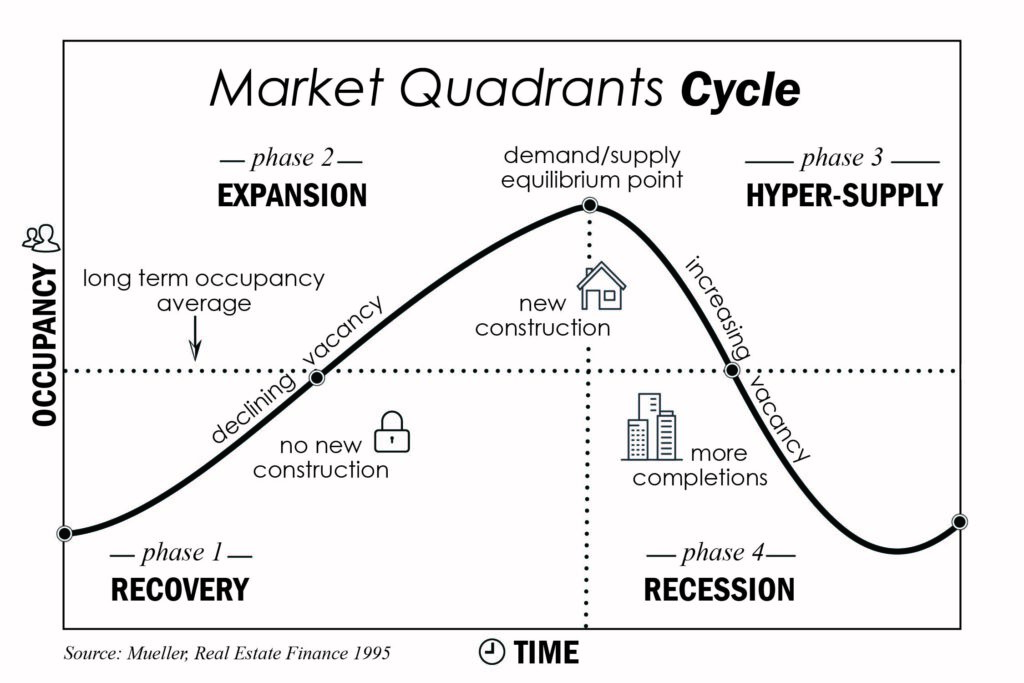
Phase I: Recovery
- The recovery phase is the first stage after a recession.
- This phase, is characterized by low demand for housing and high vacancy rates.
- This is a good time to purchase properties because the price of real estate is low.
- This can initially be a phase that is hard to identify since it may be confused with recession.
- During this phase there might still be lots of opportunities to buy real estate at low prices.
The investor mood is steering towards optimism and excitement.
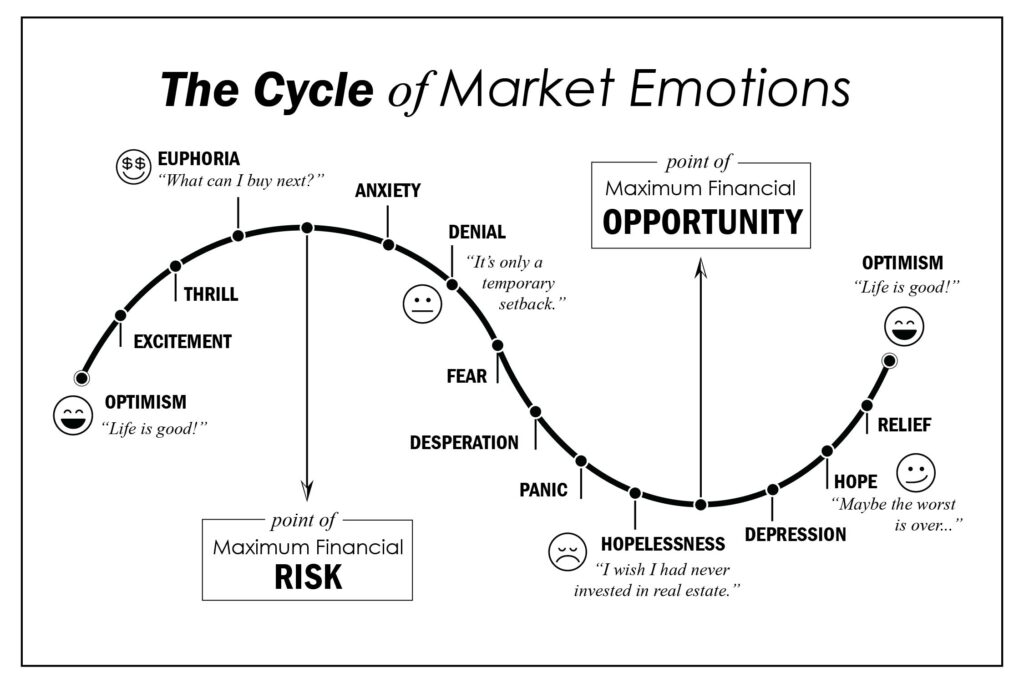
Key Indicators
- Home sales and lease are stagnant, with a slow upward trend for both.
- Interest rates tend to be either declining or holding steady.
- few new projects are being built.
Opportunities
- low-interest rates will favorise the borrowing on new real estate purchase.
- Having the required liquidity is the best approach to take advantage of this cycle.
- Buying properties below value, will create immediate profits.
Risks
- When a market is recovering from a recession, the purchasing risk is greatly mitigated because prices have already reached a deep low.
How did this phase manifest in Lebanon?
This happened during the years [2005 to 2008]
- In 2004 a revised building law raised the allowable total exploitation therefore leading to a surge in new construction during 2005.
- Additionally, in Q4 of 2006 we witnessed a sharp unexpected rise in demand for housing after the Israeli strike to south Lebanon and Beirut southern suburb.
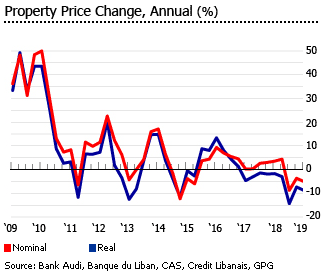
Phase 2: Expansion
- This phase starts with clear signs of recovery.
- steady growth in jobs, and increase in construction activities.
- A balance between supply and demand.
- An increase in rental rate and a decrease in vacancy.
- GDP stabilizes.
- The economy is picking up and showing signs of returning confidence.
The investor mood is now thrill and euphoria. “What can I buy next”
Key Indicators
- GDP approaching the ideal.
- Home sales and leasing increased.
- Balanced or high demand for housing
- Prices for both rentals and houses on the rise.
- New construction is picking up.
Opportunities
- Low interest rates and lending conditions eases up.
- Increasing opportunities for new construction projects.
Risks
- prices are typically on the higher end of the cycle.
- Investments largely based on price appreciation might be risky.
How did this phase manifest in Lebanon?
This happened during the years [2009 to 2011]
- The real estate market kept improving exponentially and therefore the prices is still rising.
- That was mainly due to the influx of the Gulf money after the oil price surge in 2008.
- Other factors included money laundering which was an additional factor that might have contributed to the rise of the real estate prices, although the impact extent cannot be measured.
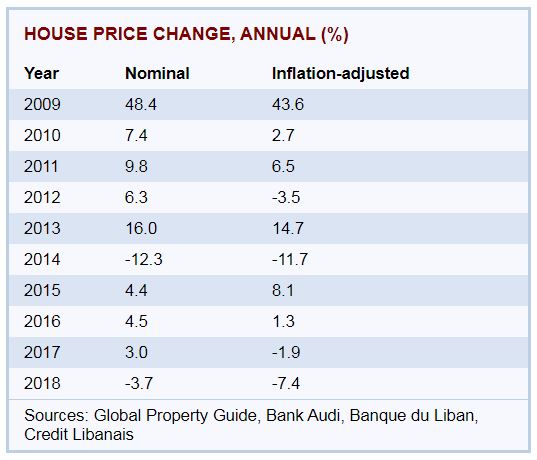
Phase 3: Hyper supply
- This phase sees the tipping point: balanced supply & demand changes to over-supply.
- Prices are slightly decreasing.
- construction activities are slowing down.
- Although a market shift is eminent and demand is decreasing, but rental rates might remain high, and new construction projects might continue.
The investor mood is towards anxiety and Denial (optimistic investors might think this is only a bump)
Key Indicators
- Supply of houses exceeds demand, this will eventually cause prices to drop.
- Rental rates remain high, but demand decreases.
- GDP & job growth, and interest rates is still relatively stable.
Opportunities
- Prices will start to drop during this phase which might present good opportunities to buy assets that can provide a sustainable cash flow which could be able to bridge you through recession to the recovery phase.
Risks
- If you aim at selling your assets, waiting too long until the market starts to decline will make it harder for you to cut your losses and you might end up selling in panic during a recession.
- This typically is the worst time to buy, since the prices have already peaked and signs of decline might still be ignored by the market.
How did this phase manifest in Lebanon?
This phase happened around the 3rd quarter of 2012, The bubble bursted due to several factors among which:
- The oversupply of luxurious large apartments faced with a sharp decline in demand.
- The local and regional political turmoil.
Few factors contributed in withholding the market and in maintaining the high prices and delayed the inevitable recession, namely:
- Foreign home buyers, and specifically Syrian capitalists, which sought refuge in Lebanon at the beginning of the war in 2011 bought upscale residences or invested in real estate projects.
- The Lebanese expats in the Gulf region maintained a moderate demand for buying homes in their mother country.
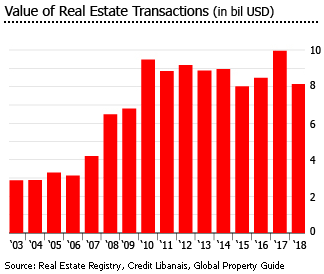
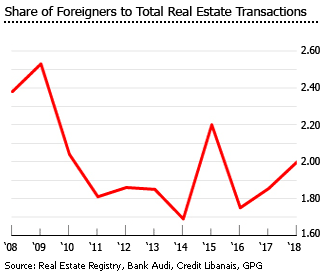
Phase 4: Recession
- Inflated growth results in a declining market and a decline of the demand on housing sale and rental.
- Jobs, home sale and rental prices, and new construction drop considerably.
- Businesses suffer, and closure for many is the only escape.
- unemployment rates rises.
- During this phase the real estate prices will be at their lowest.
Key Indicators
- Housing prices and rental rates decrease sharply due to the imbalance in the supply and demand.
- Unemployment rates at its highest.
- Spending decreases as people are inclined to save.
- Many businesses close down.
Opportunities
- Having the capital and the needed liquidity offers the best opportunity to invest in properties at the lowest price, including distressed sales.
Risks
- The risks during this phase faces the homeowners or real estate investors who did not build a capital reserve to sustain this unfortunate downturn, and therefore is bound to sell at rock-bottom prices.
The investor mood is steering towards panic, desperation and hopelessness.
How did this phase manifest in Lebanon?
This phase started manifesting in Lebanon around the 3rd quarter of 2013 and had its toll around the 2nd quarter of 2018:
- Oil prices started declining in June 2014 from 113.8$ to 36.51$ in January 2016, and never recovered (currently 58.01$ in November 2019). This event affected the Gulf purchasing power, and eventually the Lebanese real estate market which partially depended during the previous years on the foreign and the Gulf expats home buying appetite. [macrotrends.net]
- high interest rates on deposits in US Dollars, have been raised from an average of 5.77% in 2012 to an average of 7.72% in 2018, which in addition of the uncertainties in the real estate market, led to a shrinkage in the liquidity volume available for investment in the real estate market. [tradingeconomics.com]
- Unemployment reached around 37%, end of 2018.
- Absence of banks subsidized housing loans during 2018.
The Lebanese real estate market, already crippled, sustained another hit around the 1st quarter of 2019, when several factors aggravated the situation and affected all sectors:
- The country faced, end of 2018, a shortage in US Dollar banknote which led eventually in the 4th quarter of 2019 to the private banks exercising a non-regulated discretionary “capital control” on foreign currency transactions as well as on local currency withdrawals.
- Speculation about a possible “Hair cut” which, if put in action, will affect directly or indirectly all individual and corporate deposits in banks.
- Speculation about a possible devaluation of the Lebanese pound which has been pegged against the US dollar since 1997. This measure will be devastating because the Lebanese economy is dollarized, non-producing, and depending highly on imports.
- The emergence of a parallel market where the US dollar reached 2’000 LBP at the time of the writing of this article.
These factors induced additional panic in the community and affected negatively the economical forecasts.
So... Why buy real estate in Lebanon today?
3 Reasons
1
Today, supply exceeds demand, giving purchasers an advantage over sellers in price negotiations. land when purchased below market value will create immediate profits.
2
“Capital Control” and “Haircut“
The current Capital Control has led eventually to scarcity in Fresh $. The majority of owners are reluctant to accept Checks or local transfers.
For that the purchaser is being granted an estimated discount on fresh $ payments which varies from 30% to 50% in some areas
3
Land is the safest long-term investment
Historically, land value has proven its resilience to changing markets. On the long term, and irrespective of the current real estate market recession, land prices had always followed an upward trend.
